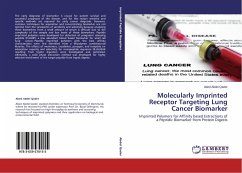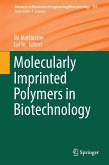The technique of molecular imprinting is a versatile procedure where a template molecule is introduced in a three-dimensional, cross-linked polymer that offers an efficient route for artificial molecular recognition. The recognition properties of molecular imprinting polymers (MIP) have been extensively pursued through capillary electrochromatography (CEC). Among the various formats used in CEC, open-tubular-CEC based MIP columns are promising tools for the research of recognition abilities of MIPs owing to simple column preparation, no bubble formation, and stable EOF application, etc. This book includes the methods of the fabrication of different porous layers on the silica capillary inner surfaces which increase the surface area and sample load capacity. The fabricated OT-CEC MIP columns have been utilized for the enantiomer separation of various classes of pharmaceutical drugs.
Bitte wählen Sie Ihr Anliegen aus.
Rechnungen
Retourenschein anfordern
Bestellstatus
Storno








